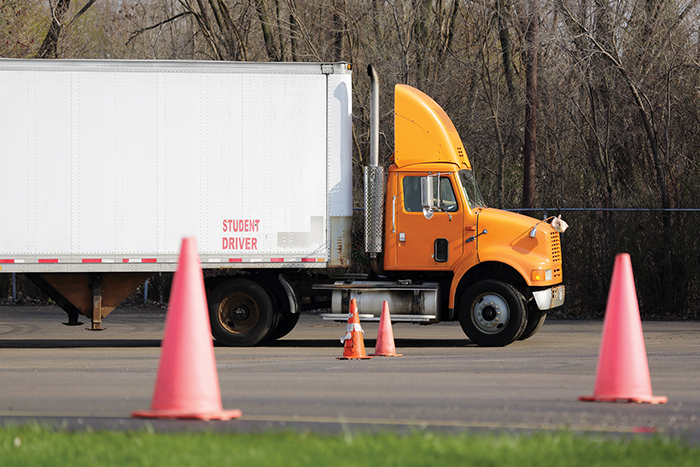The next era of truck driver training
Ontario has a long, proud history of being one of the safest jurisdictions in North America from a truck safety perspective. We’d like to keep it that way, but to do that, we, as an industry, need to evolve and there are ways to achieve this.
It’s no secret that there are increasing concerns from both carriers and the traveling public with the level of safety fitness on some highways in certain parts of the province – specifically in Northern Ontario.

In a survey released by the Ontario Trucking Association (OTA) earlier this year, 96% of respondents who operate in the north identified persistent problems related to highway safety and infrastructure in Northern Ontario. Nearly 80% want better trained truck drivers, while more than 70% said more oversight for unsafe drivers and fleets is needed.
These were the reflections professional drivers have about other drivers they share the road with.
Mandatory entry-level training (MELT) – introduced in most provinces several years ago – has served its purpose. But we need to do more, and Ontario can be a shining light again in this area, just as the province led by championing MELT.
The OTA board has been discussing the issue of truck driver training and has mapped out a direction and concepts that can shape what the future of truck driver training and enforcement in the province could look like. The province is listening intently. As part the Safer Roads and Communities Act, officials indicated they will initiate a comprehensive review of the training regimes.
Graduated licensing
OTA believes introducing a graduated approach to licensing truck drivers, based on the configurations they operate and through a licensing endorsement regime, needs to be considered by the ministry.
Because each truck configuration has its own unique operating and maneuverability characteristics, and is designed for many different types of cargo, we need to ensure that specific training provides drivers the knowledge and skills to safely and efficiently operate these vehicles.
From a progression standpoint, prospective truck drivers at the beginning of their training journey would enroll in an entry-level truck driver training program (with some recommended enhancements) and upon successful completion, they would be eligible to participate in a certified trucking company or driver training school program to earn a specific configuration endorsement.
If additional configurations are desired by the driver, subsequent enrollment in another program would be possible. At a minimum, endorsements would be required for van/box type configurations, tankers, multi-axle and double semi-trailers.
Enhancements to MELT
Meanwhile, enhancements to the entry level-training program are being proposed in two specific areas – to require an aptitude assessment prior to a student enrolling in a program to establish suitability in advance of investing in a training program; and a significant increase in the amount of driving time a student would be required to complete before advancing to MTO’s qualifying road test.
Responsible trucking operations are already engaged in the endorsement concept in the form of boarding/upskilling/mentoring. Historically, these programs, which are self-funded by the trucking company, are necessary for many trucking companies to put a driver behind the wheel who they feel is safe and reliable and to meet certain insurability requirements.
Unfortunately, as we know very well, not all fleets take on this responsibility and road safety can be impacted.
Of course, funding has remained the stumbling block to achieving wider success for on-boarding programs. Ideally, funding should be institutional like other designated occupations, and be available for qualifying carriers to offset some of the costs they currently incur today and to incentivize carriers to take on the task of training new drivers.
OTA has done some preliminary costing analysis that could shape a government funding mechanism we feel is reasonable and we look forward to evolving the concept.
As consultations begin, discussions and the design around a robust and proactive oversight regime for carriers, driving training schools, driver trainers engaged in the onboarding/mentoring endorsement process will be critical.
Once the driver completes the endorsement phase of the training, they would be fully licensed to operate the designated configuration. We believe this plan would successfully fill in some of the critical steps currently missing from the truck driver training regime in Ontario.
Certification training for designated configuration and enhancing the entry level training model are just some ideas and plans OTA has for boosting truck driver and highway safety in the coming years.
Our multi-faceted supply chain has faced many challenges in recent years and will continue to adapt to change. It is our responsibility to provide the safest, most employable, truck drivers who can be relied on to continue moving our economy and to work with the ministry and likeminded industry groups to achieve this.
Have your say
This is a moderated forum. Comments will no longer be published unless they are accompanied by a first and last name and a verifiable email address. (Today's Trucking will not publish or share the email address.) Profane language and content deemed to be libelous, racist, or threatening in nature will not be published under any circumstances.